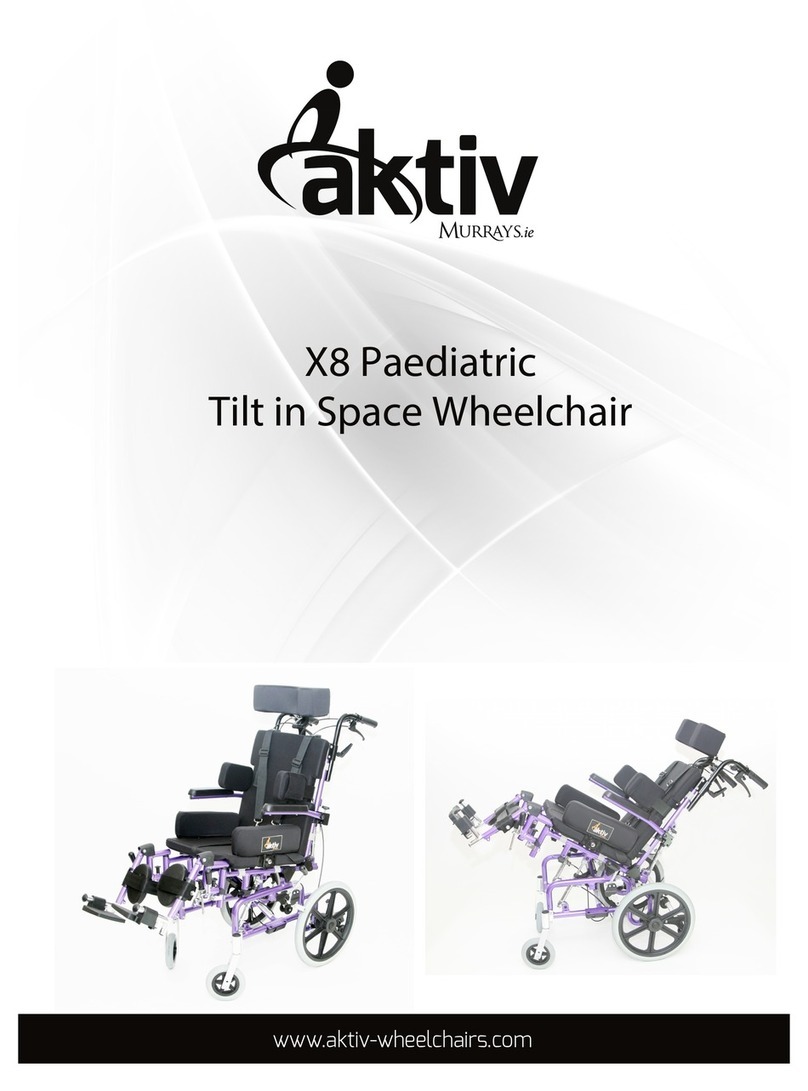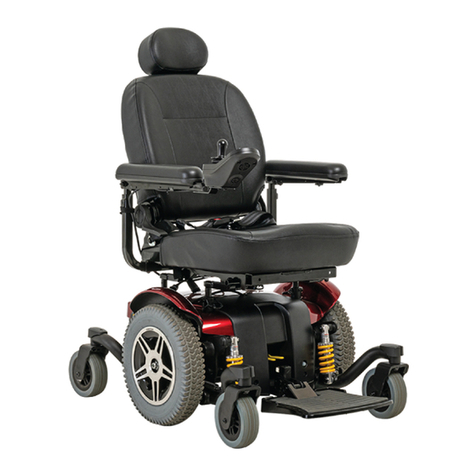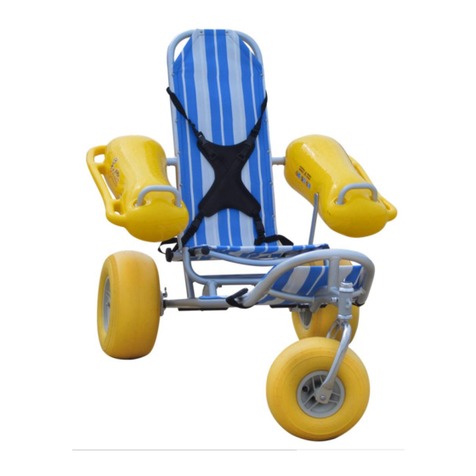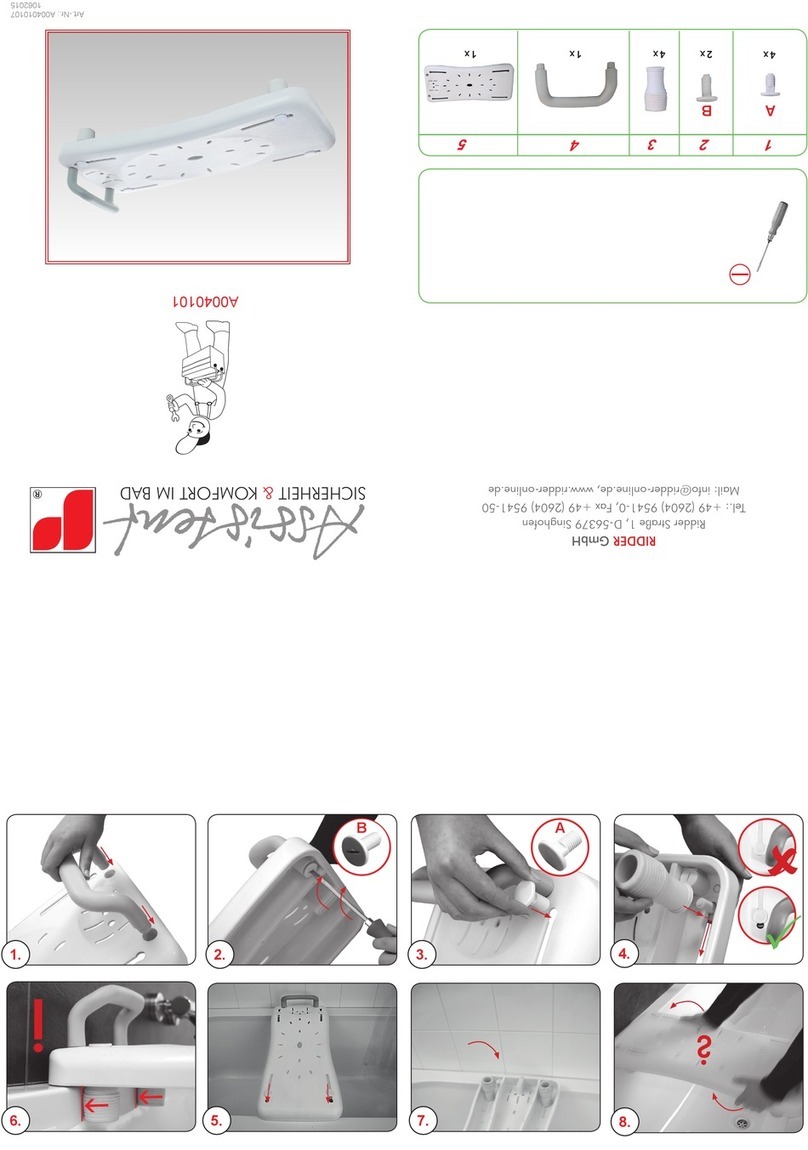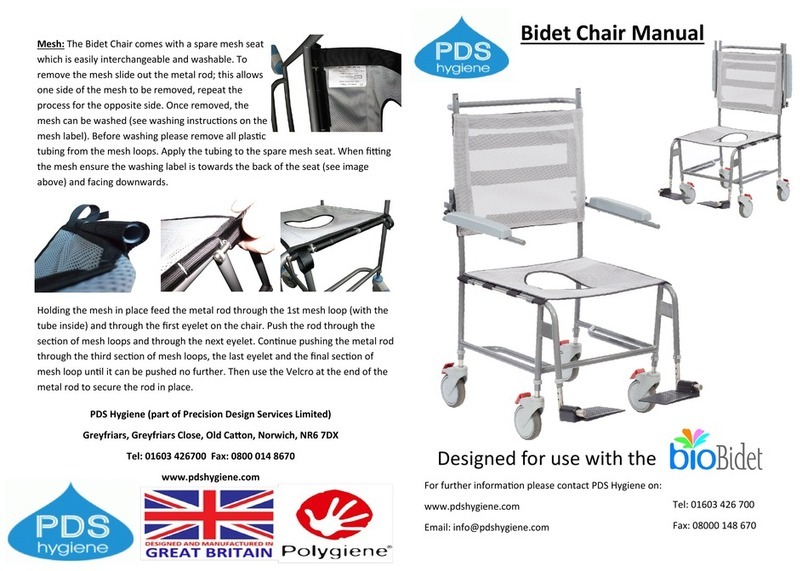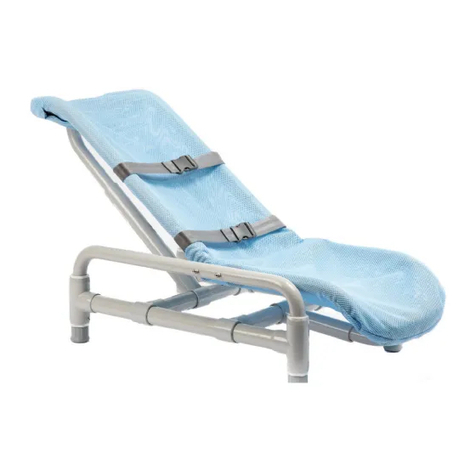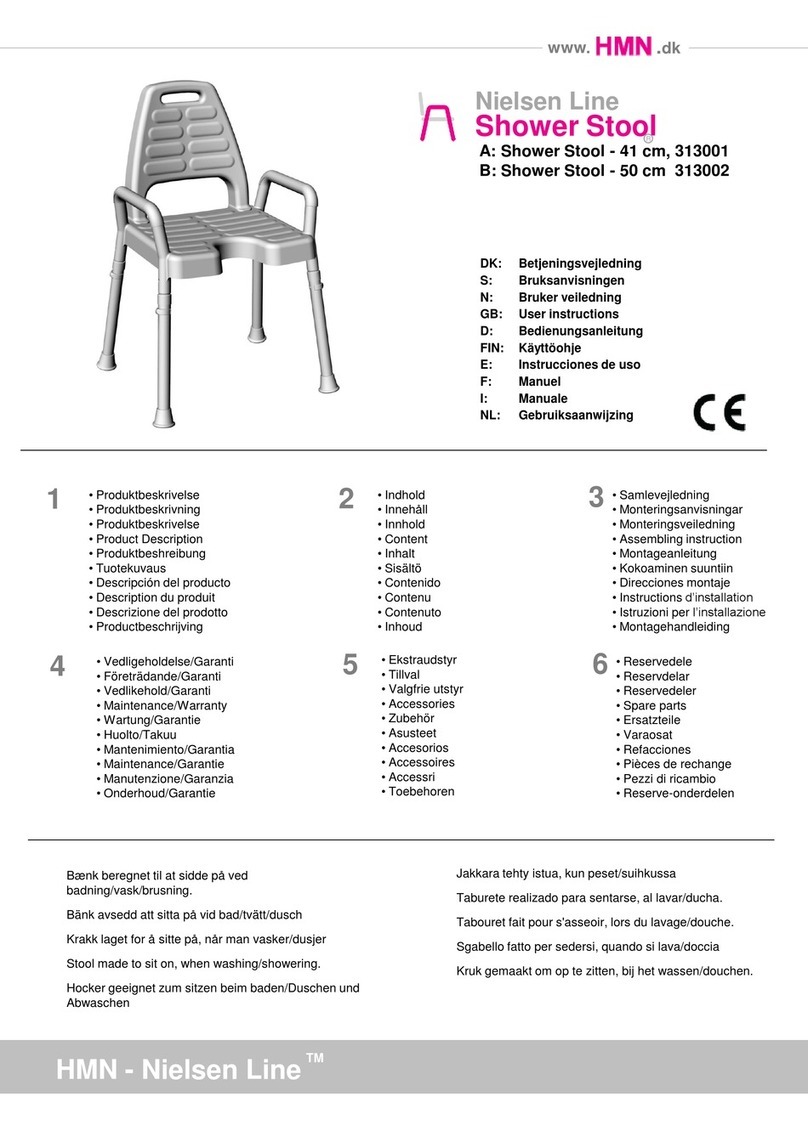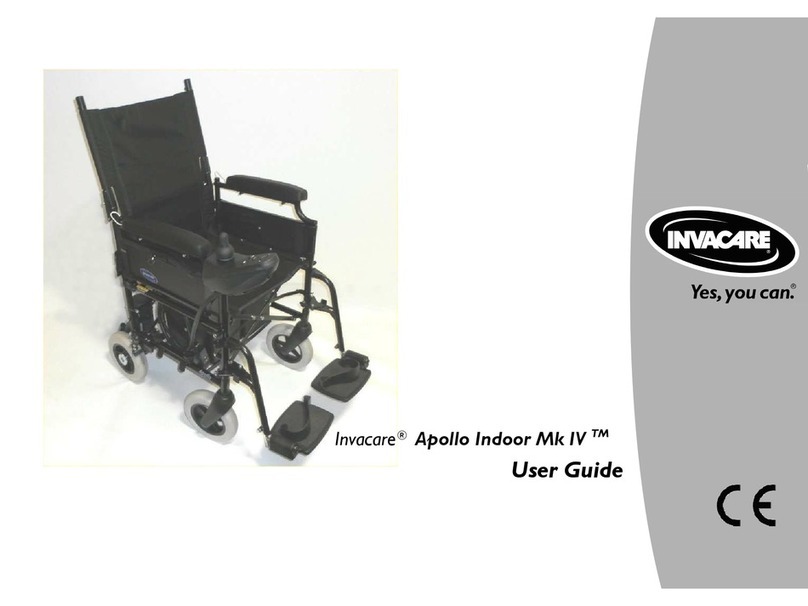GILANI ENGINEERING JRWD1003 User manual

ELECTRIC WHEELCHAIR
JRWD1003
User Manual
Before using this product, read this manual carefully and save for future reference

1
Preface
Please read the user manual carefully before taking the product into use.
This manual contains operations, assembly methods, and simple faults solutions.
This manual applies to our models: JRWD1003.
This manual contains wheelchair maintenance and self checking methods, please put it in proper
place.
Please provide this manual for reference when other people are going to use this wheelchair.
The annotations and illustrations in this manual might be slightly different with the real parts due to
quality improvement or changing design. Please in kind prevail.
Contact with your dealer if there is any ambiguity or question.
Improper use of any vehicle may lead to injury. Unsafe driving could harm yourselves and others.
The electric wheelchair is intended to comfortably transport persons with walking difficulties or no
walking abilities.
This electric wheelchair is designed to transport 1 person only.
Symbols used in this manual
Warning symbol
Follow the instructions next to this symbol closely.
Not paying careful attention to these instructions could result in physical injury or damage to the
wheelchair or the environment.

2
1 Product Introduction
1.1 Product Image
Picture 1
1.2 Product Information
Main technical data
JRWD1003
Overall size
1110*630*1280mm
N.W.
115kg
Seat size
450*500mm
Backrest height
650mm
Height between seat and
ground
510mm
Max loading weight
100kg
Armrest height
290mm
Battery
12V 32AH*2pcs
Front wheel diameter
12 inch
Battery charger
AC 220 (110V) ±10%
50-60HZ
Rear wheel diameter
8 inch
Max driving distance
≥20km
Motor (*2pcs)
250W
Max safe slope
6°
Control
50A
Static stability
9°
Degree of protection
IPX3
Climbing angle
6°
Turning radium
≤1.2m
Obstacle climbing
40mm
Reversing width
1.4m
Backrest adjust angle
≥30°
Tire pressure
2Kgf/m2
Ground clearance
100mm
Product Performance
This series of electric wheelchairs are powered by battery, driven by DC motor. Users control
direction and adjust speed by joystick control. It is suitable for application of low speed, good road
condition and small slope.
Main Structure
This series of electric wheelchairs are mainly composed of two parts:
1) Frame Part: frame, wheel, footrest, armrest, backrest etc.
2) Electrical Part: Control, motor, battery.
Application Range
Our electric wheelchair is for disabled and elderly people (less than 100kg) using as walking vehicle,
suitable for outdoor middle distance use. Do not run on the motorways.

3
2 Safety Instructions
2.1 Driving Notice
General Driving Cautions
Please keep your hands on the armrest to control the wheelchair.
Please practice in parks or other safe open places until you can use the wheelchair skillfully.
Fully practice driving in a safe place, to master principle of moving forward, stopping and turning
circles.
Before driving to the road, please be accompanied by caregivers and confirm it is safe.
Please strictly follow traffic rules of the pedestrian, do not regard yourself as vehicle driver.
Please drive on the sidewalk and the zebra crossing. Do not drive on vehicle lane.
Steadily drive, to avoid driving in ‘Z’ line or sharp turn.
Please keep pressure of pneumatic tire properly, the abnormal tire pressure may cause unsteady
driving or excessive lost of current.
Accompanied by Caregivers or Avoid Driving in These Conditions
Drive in bad weather, such as rainy day, heavy fog, strong wind, snow, etc.
In case of wheelchair is wet out, wipe the water immediately.
Drive on the bad road condition, such as muddy, trail, sand road, gravel, etc.
Drive on crowed road.
Drive on no fence side ditch, pond, etc.
Across the railway.
When you have to across railway, pause at turnoff to confirm it is safe, and make sure that the tires
will not be stuck by railway.
The electric wheelchair is only for personal use, do not carry people or goods, and do not for a
traction purposes.
Precautions for Uphill and Downhill
Avoid driving on following places: steep hills, tilt places, high steps, channels etc.
Avoid driving on steep slopes, the slope range should be less than 9 degrees. Please carefully
operate the control when drive on slopes.
Keep moving forward during uphill or downhill.
Slow down speed during downhill.
Avoid driving sideways on the steep.
Forbid driving on the stairs place and avoid crossing high steps.
Avoid crossing wide ditches.
During crossing ditches, keep 90°angel between tires and the ditches.
Do not set the wheelchair to manual mode during uphill and downhill.
When the wheelchair is malfunction at traffic crossing, please immediately ask passerby for help. And
set wheelchair to manual mode, then push wheelchair to leave the scene, or user to get away from
the site to a safe place immediately.
Precautions for the Caregivers
Caregivers should confirm that the users’ feet are on the footrests’ proper position and ensure clothes
do not attach to the wheels.
Caregivers should push the wheelchair to move forward to keep safe on steep slope or long slope.
2.2 Other Notice
Repair and Reform
If the repair and modification is necessary, please contact your dealer. Do not modify by yourself, it
may lead to accident or malfunction.
Protect Environment
In order to protect environment, do not casually discard the abandoned wheelchair and scrapped
battery. Please contact your local dealer for replacement of new battery.
Keep the Storage Environment Dry
Do not storage wheelchair in damp condition, such as near-by bath room. If wheelchair got wet in the
rain, wipe the water immediately.

4
Do not replace parts or material randomly.
Do not add weight randomly, in case to cause imbalance.
Do not use other vehicle to pull or push the wheelchair when somebody sits on the wheelchair or the
wheelchair is in manual mode.
When there is abnormal sound, contact service immediately.
Service Lifetime
The service lifetime is 5 years from date of manufacture. User should do not overuse more than
service lifetime in case of unpredictable accident.
Protection from Electromagnetic Interference
The wheelchair should away from strong magnetic fields and large inductive electrical equipment,
such as radio station, TV station, underground radio station, cell phone transmitting radio station. Pay
attention to that if there are sources of electromagnetic interference nearby, as far as away from
those sources to avoid electromagnetic interference. The electric wheelchair should avoid
electromagnetic interference.
3 Adjustment of Wheelchair
Adjustment of Control
Rotate counterclockwise the button which under the armrest pad. Then adjust the control to suitable
position (picture 2). Screw tight the nut when adjustment is done.
Picture 2
Switch between Manual Mode and Electric Mode
Manual mode: turn off power and stop the wheelchair, spin the adjusting levers, make it parallel to
wheels. (Picture 3-1)
Electric mode: spin the adjusting levers, and make it make it 90° to wheels . (Picture 3-2)
Picture 3-1 Picture 3-2

5
4 Battery and Charger
4.1 Charger Requirements
The charger is used for battery charging. During electric wheelchair is charging, do not use it.
Charger Technical Data
Input voltage: AC 220V (110V) ±10% Output voltage: 24V/DC Output current: 5A
4.2 Usage of Charger
In order to charge the battery, connect the charger with power supply and control socket. Do as
following instructions to complete charging process:
Step 1: Make sure the charger groove is not blocked.
Step 2: Make sure the electric wheelchair is power off.
Step 3: Unplug the plugs which connect the battery box and control.
Step 4: Connect the charger’s output plug to the socket below the control.
Step 5: Connect the charger’s main plug to the power supply and the red
light will be alight. Fully charging needs 8 to 10 hours, do not overcharge
more than 24 hours.
Step 6: As to prevent cut short battery life, please charge the battery at least once per month when
the wheelchair is not being used.
Do not stop charging until charge process is finished. Repeat using the battery which is not
fully charged will shorten the battery life, so the battery should be fully charged as much as possible.
When battery is fully charged, the power indicator will turn to green. Do not stop charging before fully
charged.
After finish charging, turn off the power supply, otherwise the battery will discharge slowly. Do not
charge more than 24 hours. Over-charging is dangerous.
Users should follow the following rules to avoid charging dangers:
The electric wheelchair doesn’t include the charger, please use national standard charger that the
output voltage is 24V/DC 5A.
It should be well ventilated when charging. Do not expose the wheelchair to sunlight and humid
environment.
The charging environment temperature range is from 10
℃
to 50
℃
. If it is out of the environment
temperature range, the battery is unable to function well, and can easily make battery damaged.
It’s normal for the fan making a sound during charging. It is for cooling the charger, please do not
worry about it.
Prevent liquid go into the charger during charging. And do not place charger on the flammable items,
such as: fuel, footrest or seat cushion.
4.3 The Usage and Maintenance of Battery
Wrong operation of replacing battery may cause danger of explosion. Only the same or
recommended type of battery is suitable for replacement. And please make sure the battery poles are
correct. Key points for prolong the battery life: charge frequently, to keep battery power full. It’s better
to fully charge the battery if the wheelchair is not being used. If stop using for a long time, it’s better to
charge twice per month.
Please stay away from the flames when charging the battery. The flames may cause battery
fire or explosion.
Charging makes hydrogen, do not smoke while charging.
Do not unplug the power supply when the socket or your hands are wet, it may cause electric shock.
In case of unpredictable accident will happen and hurt the user, do not use or sit on the electric
wheelchair when charging.

6
5 Control
5.1 Control Panel
5.2 Control Usage
Power Switch
Press the on/off button, All Battery gauge LEDs turn on one by one. After the control
has started up successfully, the Battery gauge shows the charge of the battery.
Press again, all the LED lights are off.
In some emergency, you can directly turn off power by press power button. If
the on/off button is pressed while the chair is driving, the chair will perform an emergency stop before
it turns off.
If the control is turned on while the joystick is not in the centre position, an “Out Of Neutral At Power
Up” fault occurs. During an OONAPU fault the speedometer LEDs flash continuously and the chair
will not drive. As soon as the joystick is released back to the centre, the fault goes away and the chair
will drive normally.
OONAPU is a feature that prevents sudden and unexpected electric wheelchair movements if the
joystick is out of the centre when the control is turned on.
Sleep Mode
If the joystick has no operation more than 5 minutes, the power turn off automatically, and the system
in the sleep mode. System will be woke up from sleep mode by press on/off button or press any
button on the control or move the joystick.
Adjust the maximum drive speed
You can adjust the maximum speed of the chair to your preference or environment.
The currently selected top speed is shown on the Speedometer.
Press and release the “slower” button to decrease the maximum speed of the chair
by 20 %. Press and release the “faster” button to increase the maximum speed of
the chair by 20 %.
Horn Button
Press the horn button, the horn will sound as long as the button is pressed.

7
Battery Power Gauge
If user drive the electric wheelchair until the battery is completely empty or leave the battery
with a low charge for a long time, you will damage the battery. This damage is permanent. The
battery will never return to its original capacity and your chair will have a shorter range.
Use of joystick
Move the joystick. The wheelchair starts to drive in the direction
of the joystick movement. The amount of joystick movement determines the speed
of the wheelchair. If the joystick is moved further from the centre, the wheelchair will
drive faster.
Please turn on or turn off the power when the joystick is in the middle position. Otherwise the
control will let out wrong operation signal. Release the joystick to middle, this mistake will stop. If the
mistake is still continuing, perhaps this part is malfunction, do not use it and contact with your dealer
for maintenance.
5.3 Operation in different mode
Driving Mode
Turn on the power, the Speedometer LED is light, operate the joystick to control wheelchair
driving.
Before driving, please lift the front castor ≥5cm away from ground, shown as picture 4.
Do not drive the wheelchair when it is in standing mode.
Do not press the Seat Function “2” button when the wheelchair is in standing mode. Otherwise, user
will get hurt.
Standing Mode
Press the Seat Function button, the Speedometer LEDs turn off and the “1” LED
turns light. Then push the joystick forward, the wheelchair go to stand; push the joystick
backward, the wheelchair resume to sit mode.

8
Lying Mode
Press the Seat Function button again, the “2” LED turns light, the wheelchair turn
to lying mode. Pull the joystick forward, the footrest lift up and backrest lie down. Pull the
joystick backward, the footrest lower down and backrest lift up.
Under the armrest pad, there is a red button which controls the lying mode of
backrest. When “ ” is pressed, the joystick can only control the footrest move, the backrest has no
action. When “ ” is pressed, the joystick controls the footrest and backrest move at same time.
Press the Seat Function button again, the “2” LED turn off, and the Speedometer LEDs
turn light, and the wheelchair change to driving mode.
Do not forget to make the footrest at the lowest position when the wheelchair stand.
Preparation before Stand
Move away the knee guard and tray, flip up the armrest, let user sit down on the seat. Then install and
adjust the knee guard to a proper position. Lower down the armrest, tie the safety belt, then operate
the wheelchair according to this manual instruction.
6 Wire Connection of Centre Control
Please make sure that the wire connection is same as following picture shows

9
7 The Fault Indicator - Flash Codes
A flash code is a specific number of short flashes, followed by a pause. If the fault
is a serious fault that prevents the chair from driving, additionally the Battery
Gauge shows a 'Drive Inhibit' indication.
Flash code
Fault source
Explanation & Solution
1
Route /
Temperature
The motor current has been at the maximum value for too
long.
The motors may not be strong enough for the chosen route
(the route is too steep).
Turn off the control, let it cool down, then turn it back on
again and choose another route.
The wheels may be rubbing on the frame.
Make sure that the wheels can turn freely.
The motors may be faulty.
Have the motor(s) checked by a service technician.
The control is too hot.
Wait a few minutes and try again
If this happens often, contact DYNAMIC
2
Battery
The battery voltage is too low or too high.
Check the batteries and the cables.
Batteries may be empty: charge the batteries.
Batteries may be overcharged:
if driving downhill, slow down or turn on the lights, if fitted.
Batteries may be damaged: contact your dealer.
If this fault occurs during battery charging, the battery
charger is defective or not adjusted correctly.
Contact your dealer
If this fault occurs during when you stop or when you travel
down a slope, and the batteries are not full, the battery
connector may make intermittent contact.
Check the battery cables and connectors.
3
Left motor
The motor is not connected to the control, or there is a
short-circuit in the motor connection.
The motor brushes may have lost connection. Turn the
wheels of the chair to reconnect the motor brushes, and then
turn the control off and on. If this happens often, the motors
may be faulty.
Check that the motor cables are not loose or damaged.
Contact your dealer.
4
Right motor
5
Left park brake
The park brake has been released manually.
Enable the park brake, and then turn the control off and on.
The park brake is not connected to the control, or there is a
short-circuit in the park brake connection.
Check that the motor cables are not loose or damaged.
Contact your dealer.
6
Right park brake
9
Missing Power
Module
A communication error between the Remote and the Power
Module.
Batteries may be completely empty: charge the batteries.
Batteries may be damaged: contact your dealer.
Check that the SHARK Bus cable is not loose or damaged.
Contact your dealer.
All Other
Internal fault
Contact your dealer.

10
8 Maintenance
Maintenance of wheelchair includes clean wheelchair, check wheel and battery, and charge battery.
For further maintenance please contact with your dealer. Our suggestion is checking the wheelchair
every half year, annually overhaul.
8.1 Clean and Battery Maintenance
Clean Wheelchair
Please clean the wheelchair regularly.
Clean the parts which are frequently touched with user’s body (such as set cushion, armrest, control)
by a clean and slight wet cloth. Do not use organic solvents to clean.
If it is a patient user, the wheelchair should be cleaned once per week. If the wheelchair is used by an
infectious victim, it should be cleaned and disinfected by disinfectants.
Wheels
Check the tires’ air pressure and their wear condition regularly. When the tire tread pattern depth
reduce to 1mm, please replace new tire.
Battery
To make sure that the battery is fully charged frequently. In order to prolong battery life, we strongly
recommend users do not to charge until battery run out of power totally.
8.2 Wheelchair Malfunction and Checking
When malfunctions happen during the wheelchair is working, please turn off the power before check.
Symptom: completely lose power, and all the LED lights on the control panel are off.
Check Step:
Step 1: To check if the control’s plug is loose.
Step 2: To check if the connection of control’s plug and battery box is loose. Please reinsert the plug
connector (hold the plug when pull out the plug. Do not pull the wire to avoid unnecessary damage to
the wire line). After above checking, if the wheelchair is still not able to restore the power, or if users
have any question for above checking, please connect with your dealer.
The control has a diagnosing system to monitor the control and motor. Any malfunction of
these parts is indicated by the control. For more details please kindly refer to chapter of audio signal
indication.
8.3 Maintenance Checking
The following is a checking list, electric wheelchair should be ordinal checked according to our
suggestion. When you get on or get off the wheelchair, some self checking is done automatically. For
more your attention, we particularly list these self-checking items in A area.
A area
Before use, please check if following parts are correct:
1.Backrest 2.Armrest 3.Control position
4.Footrest 5.battery power
6.Clutch/adjusting lever for conversion between manual mode and electric mode
B area
Check the following parts monthly, to avoid original parts loosing or wearing
1. Screws 2. Brakes
3. Clutch/adjusting lever for conversion between manual mode and electric mode
4. The front and rear wheels and their tread pattern depth
5. Connectors’ of control and charger
C area
For safety, semiannual overall maintenance is needed.

11
9 Warranty issues
Warranty contents
We elaborately design this wheelchair for you. If there are improper materials or manufacturing, we
provide free repair and lifetime maintenance according to the time and conditions in warranty cards.
Warranty does not cover in these conditions
Subjective impression, no function problems.
Usage and aging loss(coating and plating surface, nature fade of resins, etc).
Maintenance are not applicable when following happens
Don’t regularly check our specified issues.
Improper or wrong maintenance.
Different operation with our manual or overload
Unauthorized modifications
External factor such as: soot, pharmaceuticals, bird droppings, acid rain, flying stone, metal powder,
etc.
Natural disasters such as: typhoons, floods, fires, earthquakes etc.
The following fees are not covered
Replacement of consumables material such as tire, fuse, plastic parts, glass parts, lubricates etc.
Fees for Inspection, adjustment , add oil, cleaning , etc.
Fees for regularly check that specified by our factory.
Unauthorized modifications
Out authorized service centers maintain costs.
Customers pay attention following cautions
In order to make the warranty is valid, customers have obligation to follow below cautions:
Correctly testing and driving the power wheelchair as manual instructions.
Daily checking.
Implementing the check tips according to our suggestion.
Warranty acceptable
If warranty is needed, please take the power wheelchair and show the after sales service card to our
service center for the warranty service. If the user can’t provide the after sales service card the
service is not provided.
Protect environment
In order to protect environment, every damaged or scraped part of power wheelchair should be
backed to our factory or handed over to State Department disposed, do not threw randomly.
Warranty valid
The after sales service card is valid from stamped date.
This product warranty 1 year under normal operating conditions.
Consumable parts(such as: battery set cushion, tires, side board, armrest cushion etc)are not under
warranty range.
During the warranty period, the maintenance is free. Over the warranty period the
maintenance should be charged, the exactly charge fees please consult the service center.

12
10 Others
Condition for Transport and Storage
During transport and storage, the electric wheelchair should be correctly placed as labeled indication.
Transportation should be avoided moisture and sunlight and away from heat resource.
In case of electric parts are damaged due to damp, please avoid storing the wheelchair in rain,
outdoor and moisture.
Storage condition:
Environment temperature -40℃~+55℃;
Relative humidity≤80%;
Air Pressure 86kPa~106kPa.
Main Security Features
Classified according to the type of protection electric shock: Internal power.
Classified according to the type of protection against electric shock: Type B application.
Classified according to the degree of inlet liquid protection: IPX3.
Classified according to the safety of use in a flammable anesthetic mixture with air or gas mixed
with oxygen or nitrous oxide flammable anesthetic gases occurs: Non AP/APG type.
Classified according to operation mode: Continuous operation.
Rating voltage: DC.24V.
Have no protective effect on the application of defibrillator discharge section.
No signal output or input part.
Non-permanently installed equipment.

13
After Sales Service Card
Card Holder:
Contact No.:
Model:
Add:
Mfg Date:
Height:
Weight:
Joystick Position:
Serial NO.:
Quality Warranty:
Your purchased product has following warranty service:
1. Motor, controller and frame has one year warranty. During warranty period, free maintenance.
2. Provide door to door maintenance, service fees should be charged, the fees according to distance.
Service
Recording
Date
Description
Note:
1: If you changed your contact information, please inform us in time;
2: The replaced parts were owned by our company;
3: The consumable parts such as battery, tire, arm-rest etc., are not covered under warranty.


Table of contents
Other GILANI ENGINEERING Wheelchair manuals
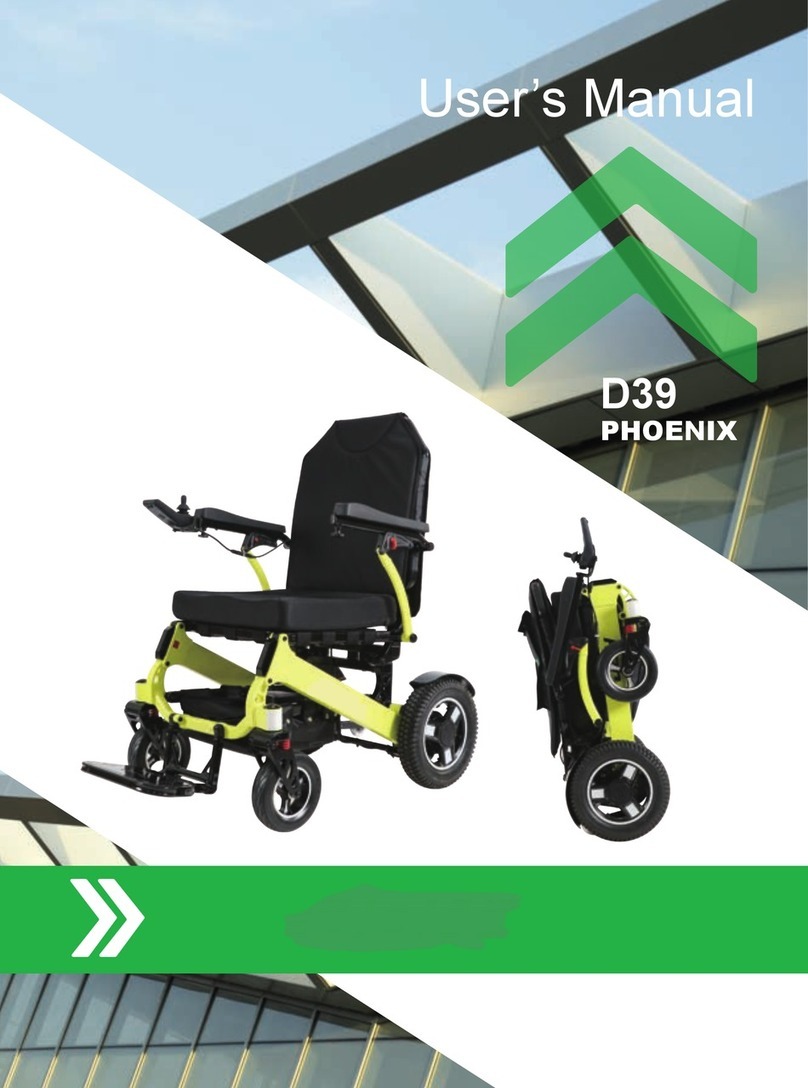
GILANI ENGINEERING
GILANI ENGINEERING D39 Phoenix User manual
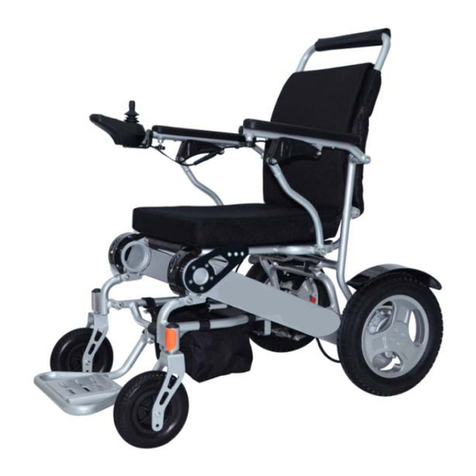
GILANI ENGINEERING
GILANI ENGINEERING GED09 User manual
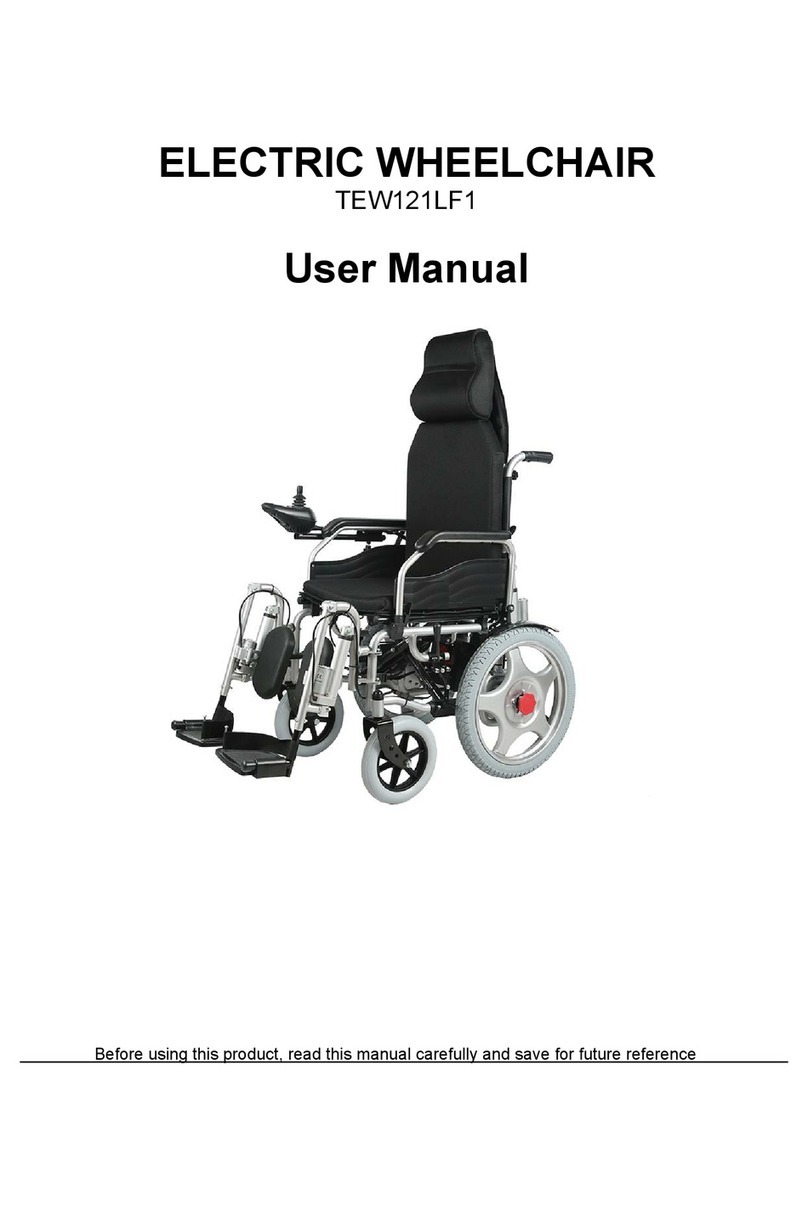
GILANI ENGINEERING
GILANI ENGINEERING TEW121LF1 User manual
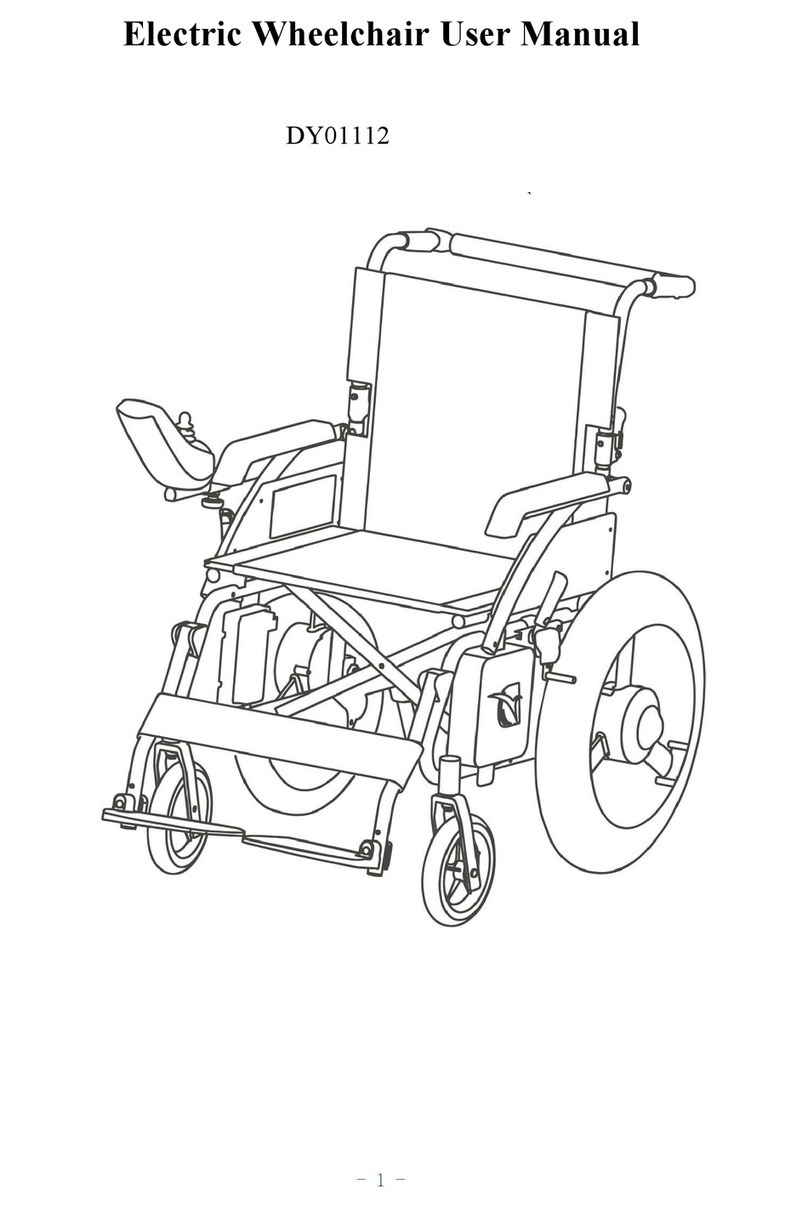
GILANI ENGINEERING
GILANI ENGINEERING DY01112 User manual
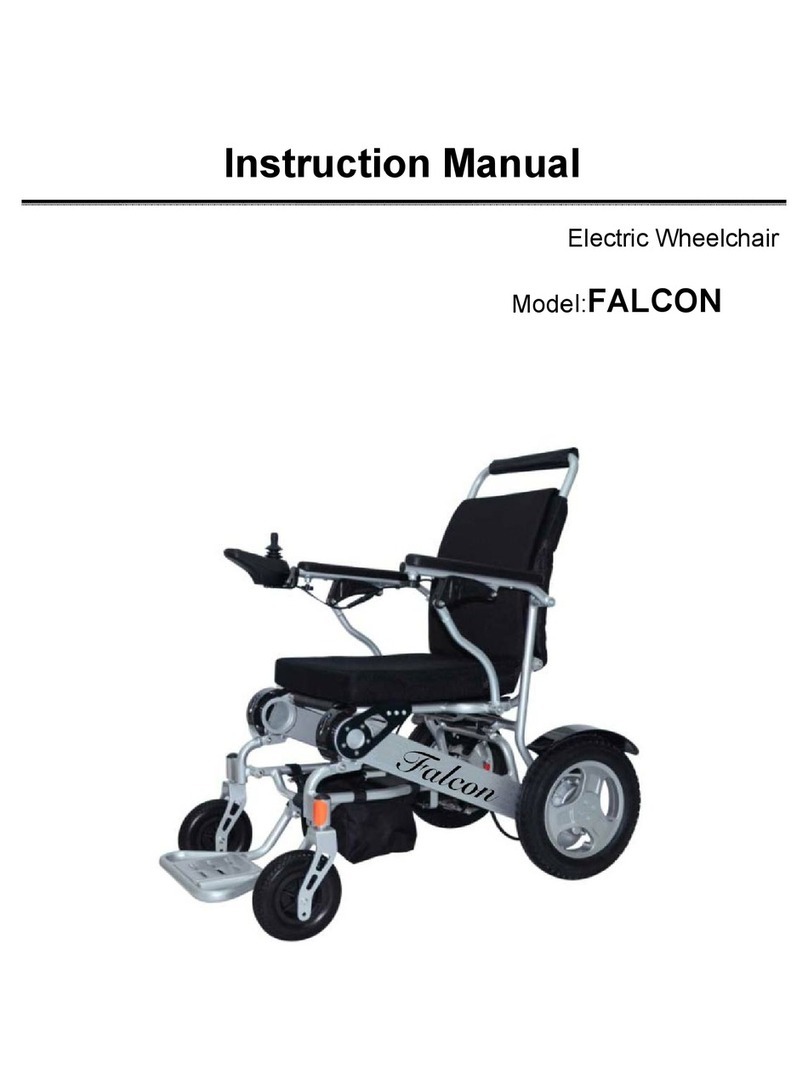
GILANI ENGINEERING
GILANI ENGINEERING FALCON User manual

GILANI ENGINEERING
GILANI ENGINEERING GED09 User manual
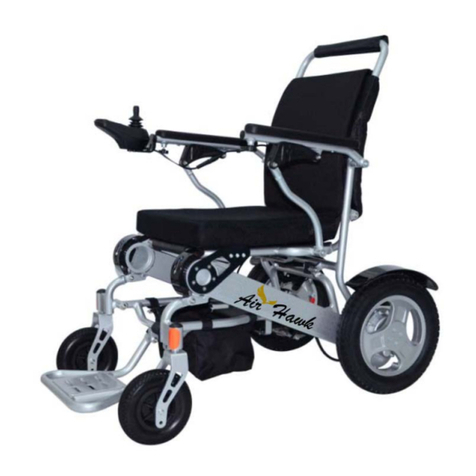
GILANI ENGINEERING
GILANI ENGINEERING Air Hawk User manual



